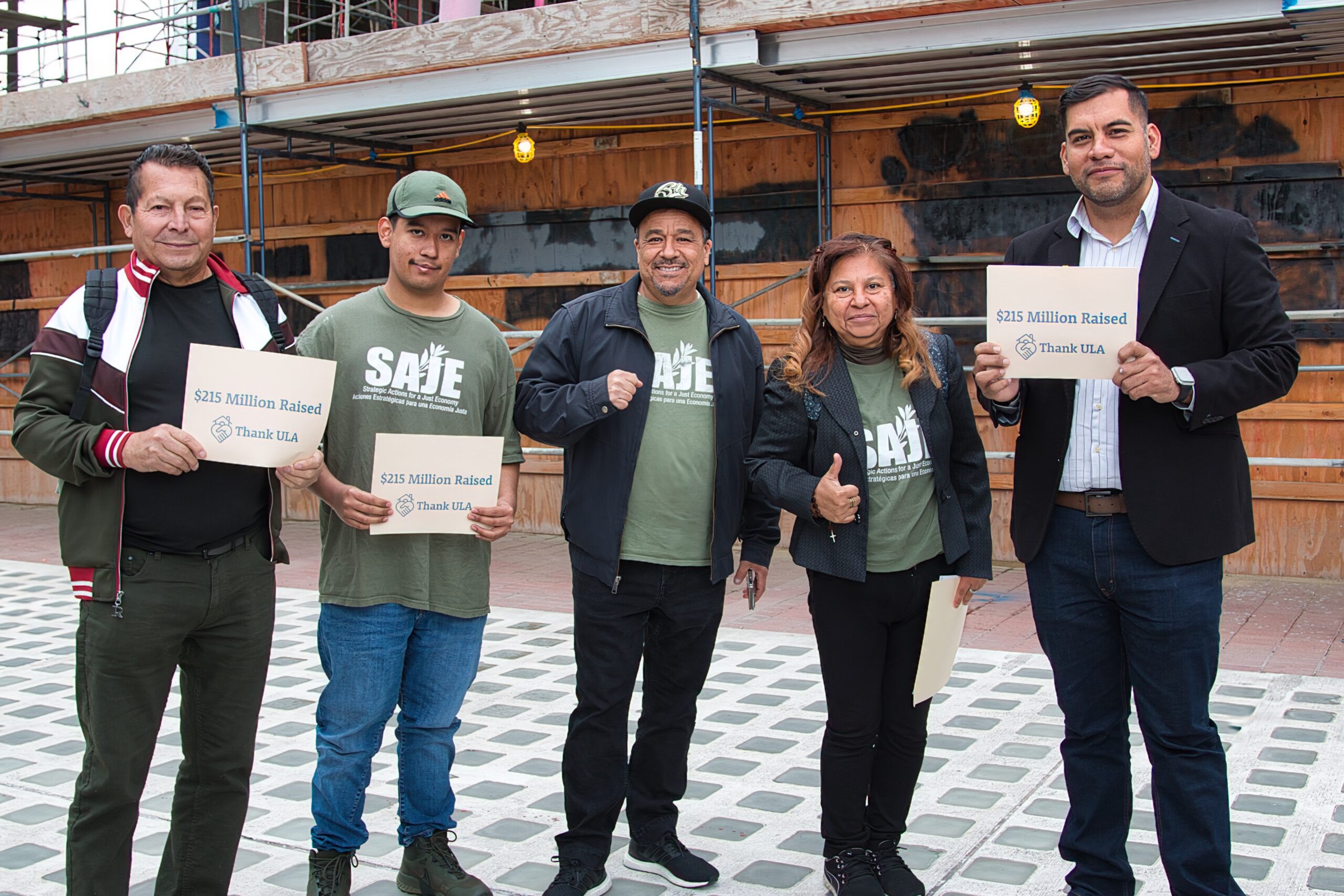This Wednesday, November 6, the City Council’s Housing & Homelessness Committee will vote on these amendments. Join us and fight for permanent affordability with ACT-LA’s Action Alert.
By Maria Patiño Gutierrez, Director of Research and Policy, Equitable Development and Land Use
In November 2022, Los Angeles voters passed Measure ULA because they understood the necessity of a long-term plan to solve Los Angeles’ affordable housing crisis. Measure ULA levies a one-time transfer tax on properties that sell for over $5 million to create a permanent funding stream for affordable housing creation—capital Los Angeles has lacked, until now.
This is game-changing money. Before the 2020s are over, Los Angeles will need to have built 456,000 units—including 182,200 units for low-income renters—to make up for the past five decades of underproduction. ULA will allow us to do that by raising hundreds of millions of dollars annually, 70% of which must be allocated for affordable housing creation.
Earlier this year, the ULA Citizens Oversight Committee hosted a series of public meetings to solicit input as they set the ULA Permanent Program Guidelines. The committee heard from community groups and housing experts, including the Los Angeles Housing Department, Mayor Karen Bass’s office, United to House LA Coalition members, and city budget and finance departments. In part, the program guidelines specify how ULA money can be used to support affordable housing construction. One key provision set by the oversight committee: ULA-funded affordable housing must remain permanently affordable. This means restricting affordability covenants, which occur when developers use tax credits or incentives to build new housing and in exchange agree to keep rents affordable for a set amount of time, typically between 30 and 55 years.
The problem with affordability covenants is what invariably happens when they expire: property owners increase rents to market rates, displacing low-income residents who have nowhere else to go. This scenario is playing out right now in Chinatown, where Hillside Villa tenants have been fighting a 200% increase in rent after their covenant expired in 2018. Currently, there are 5,929 units in L.A. with affordability covenants that will expire by December 31, 2027.
L.A. can’t afford to lose even one affordable unit in our current crisis, much less thousands. But now the Los Angeles Housing Department wants to amend the original ULA program guideline language around permanent affordability, which reads, “The term of the affordability restrictions in the Regulatory Agreement shall be in perpetuity,” and replace it with “the term of the affordability restrictions in the Regulatory Agreement shall be in perpetuity, or such other maximum length of time as may be permitted by applicable law.” This loophole opens the door for affordability covenants.
SAJE is strongly opposed to this revision, and we want to see the guidelines revert back to the ULA Citizens Oversight Committee’s original provision: any affordable housing built with ULA money should be permanently affordable. L.A.’s housing crisis, decades in the making, is going to take years to solve, and allowing affordable units to eventually revert to market rate will set our hard-won progress back. If the city is serious about securing a long-term future for affordable housing and ensuring all Angelenos have a permanent, affordable place to call home, we must do everything we can do to guarantee permanent affordability.
On November 6, Los Angeles City Council’s Housing and Homelessness Committee will vote on amendments to the ULA Permanent Program Guidelines. Let them know that you support permanent affordability. In the coming days, we will be posting our public comment toolkit, so stay tuned!

